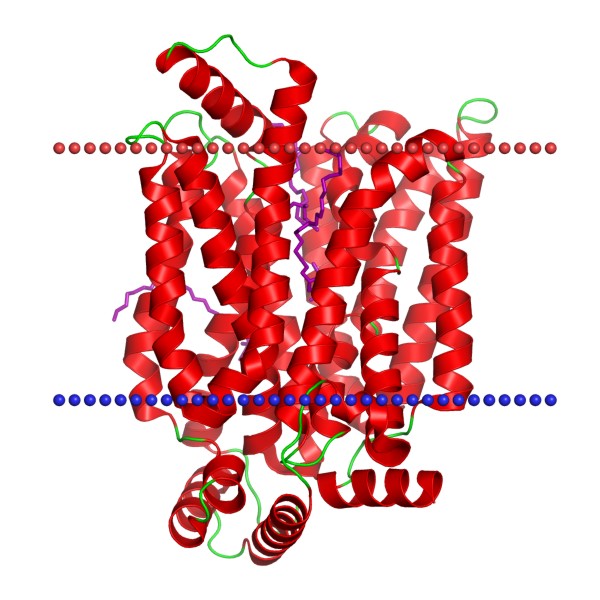Mempro™ Major Facilitator Superfamily (MFS) Production Using Virus-Like Particles
Creative Biostructure provides custom Mempro™ major facilitator superfamily (MFS) production service in virus-like particles (VLPs) system.
Major facilitator superfamily (MFS), which contains dozens of membrane protein families, is one of the largest superfamilies of transmembrane solute transporters. MFS conducts the transportation of small solutes across the cellular membranes. MFS exists ubiquitously in nearly all the kingdoms of life for the cross-membrane transportation of certain substrates. Members of MFS perform the transmembrane movements such as sugar take-up, drug efflux, Krebs cycle metabolites, amino acid transportation, oxyanions transportation, etc. The central structure of MFS is 12 transmembrane helices (TMH). These TMHs belong to two 6-helix bundles which are formed by 6 N-terminal and C-terminal homologous domains of the transporter and the transporter are connected by an extended cytoplasmic loop.
 Figure 1. The schematic structure of human glucose transporter GLUT3/SLC2A3. (OPM Database)
Figure 1. The schematic structure of human glucose transporter GLUT3/SLC2A3. (OPM Database)
Virus-like particles (VLPs), defined as "empty viral shells", are self-assembled subunits formed by viral structural proteins. VLPs behave the same as native virus, but are non-infectious because of lacking of virus genetic materials. VLPs have been used in vaccine delivery researches, recombinant membrane protein productions, and antigen delivery programs for a quite long time. Multiple host systems have been reported to obtain VLPs successfully. Researchers have developed molecule tools to product VLPs from various virus families including Retroviridae, Parvoviridae, bacteriophages, etc.
With years of experience, Creative Biostructure now can provide custom Mempro™ MFS membrane protein production service using the most advanced VLP technique. Our team has developed multiple host systems for VLPs production to meet different requirements of our customers. These host systems including but not limited to: green plants, insect cells, mammalian cells, yeasts, etc. Creative Biostructure will develop the optimal production strategies for each individual case. We will co-express the target MFS protein along with the viral core structural protein (e.g. the Gag core protein from retrovirus.) in the chosen host cells. The expressed viral core structural protein will proceed the self-assembly within the plasmid membrane and budding-off from the plasmid membrane to form the specific lipoparticles, which defined as VLPs that containing high concentration of specific target protein within their construction. The expressed target MFS membrane protein will be captured within the lipoparticles. We will isolate the lipoparticles from the surface of host cells. The target MFS protein is protected within the lipoparticles from detergents and mechanical disruptions during the isolation. By doing this we are able to maintain the native structure and orientation of target MFS membrane protein completely.
Creative Biostructure can also provide our customers various other kinds of Mempro™ membrane protein production services with multiple advanced techniques to lower your cost and timeline. Please contact us for more details.
References:
Saier Jr, et al. The major facilitator superfamily. J Mol Microbiol Biotechnol, (1999) 1(2), 257-279.
A.Roldão, et al. (2010). Virus-like particles in vaccine development.Expert Rev. Vaccines, 9(10): 1149-1176.
S. Willis, et al. (2008). Virus-like particles as quantitative probes of membrane protein interactions. Biochemistry, 47(27): 6988-6890.